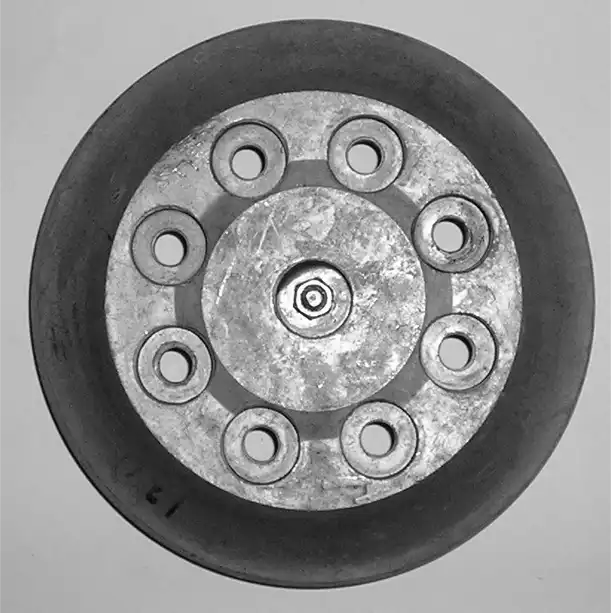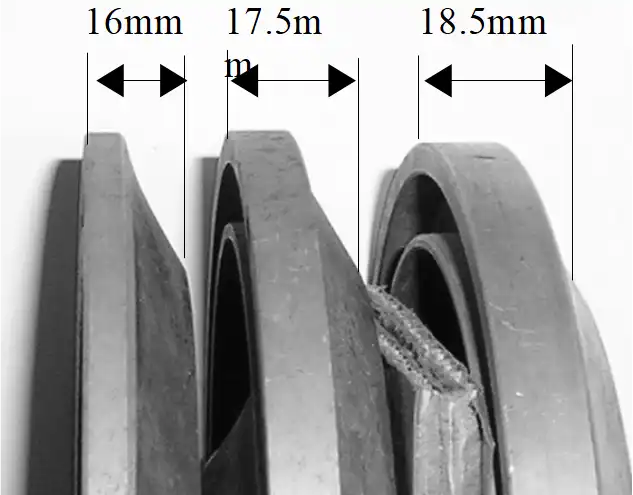KTM Bearing Plates
by Alan Buehner
Originally printed in the 2005 issue #27 of Still….Keeping Track
There are 2 styles of “bearing plates” (we refer to them as clutch actuators) that were used on KTM motors, the old style (figure A) and the new style (figure B).
The old style was used on the first 1972 KTM 175 motors and used on all other sizes of KTM motors up until the 1980's. The New style was introduced in 1976 and was equipped on some but not all motors up until 1979.
The old style bearing plates had problems. The biggest one was the housing which was made of magnesium. It would wear from the rotating action of the cam every time the clutch was used. The wearing will cause the cam to wobble around loosely in the opening of the housing and cause oil to leak out.
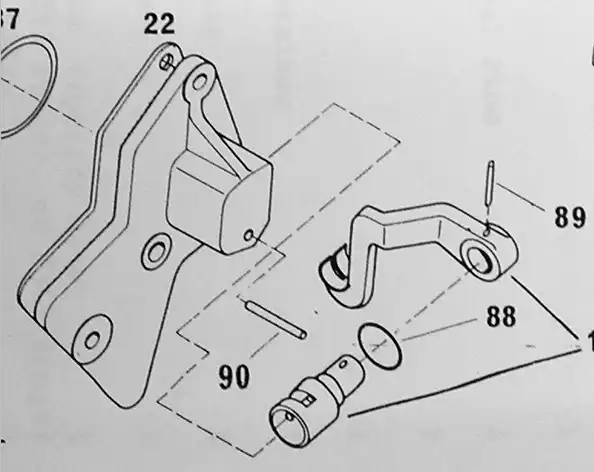
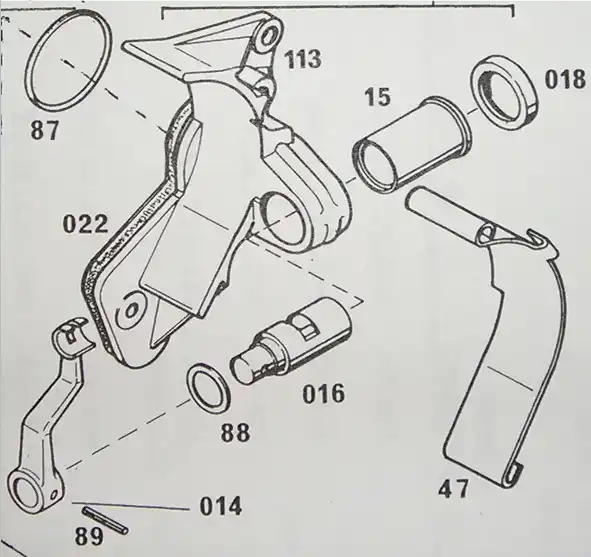
The New style bearing plate was the cure for some of the problems with the old style. It's housing was also made of magnesium, but it extends out and had a steel sleeve (see figure B, item 15) inserted into it to allow a new style cam (figure B, item 016) to rotate and not wear away the magnesium. It also was reconfigured to accept a case protector (figure B, item 47) to help protect it.
Both bearing plates have specifications that are indicated in the Penton and KTM owners manuals as “measurement X” (see figures C and D) that is required in order to have proper operation of the clutch in engaging and dis-engaging of the clutch plates when working on the clutch assembly. What is not mentioned in the owners manuals are some of the items that need to be looked at during maintenance checks of the bike and if you run out of adjustment on your clutch cable.
Because the KTM motors are used in dirt bikes, the clutch is used much more than that of street bikes and parts will wear especially after 20+ years. If your measurement “X” is less than specified or if you are overhauling your engine, remove the bearing plate and then remove the cam assembly (see figure E) for inspection. On the old style bearing plates you must remove the pin (Figure A, item 90) to remove the cam.
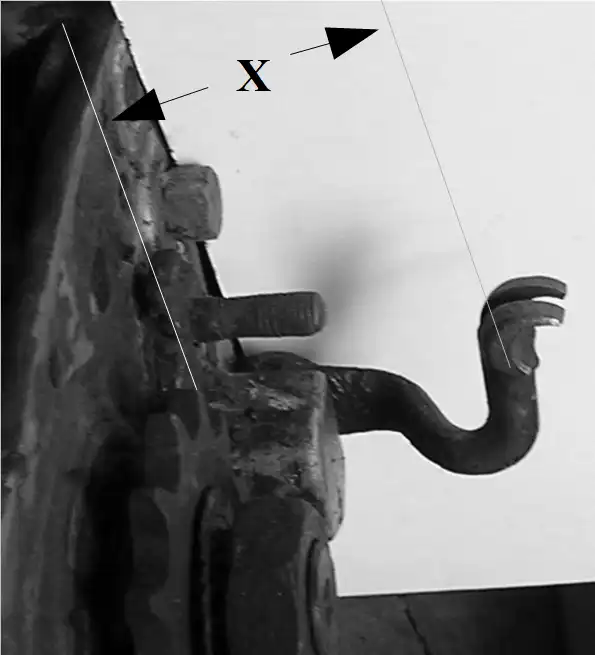
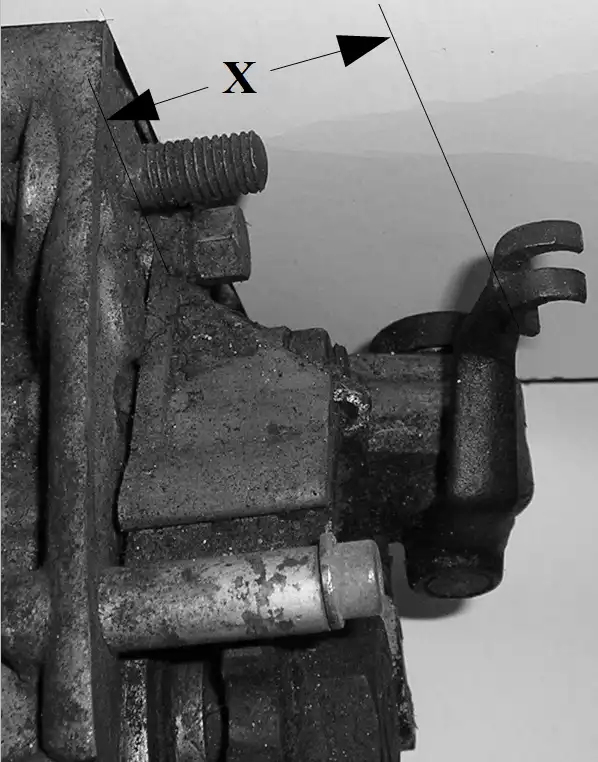
With the cam removed, check the pin (Figure E, item 3) for wear . If it is worn flat (see figure F) it must be replaced to reestablish measurement ”x”. A little bit of wear will put measurement “x” out of specs.. To replace the pin, you must remove the arm by driving out the pin holding it in place. With the arm removed a small hole needs to be drilled into the cam big enough for a thin punch to be inserted into it to drive out the worn pin. Insert a new pin (part no. 0402-041-550) and install a new o-ring (part no. 0770-021-120) before installing the arm back into place.
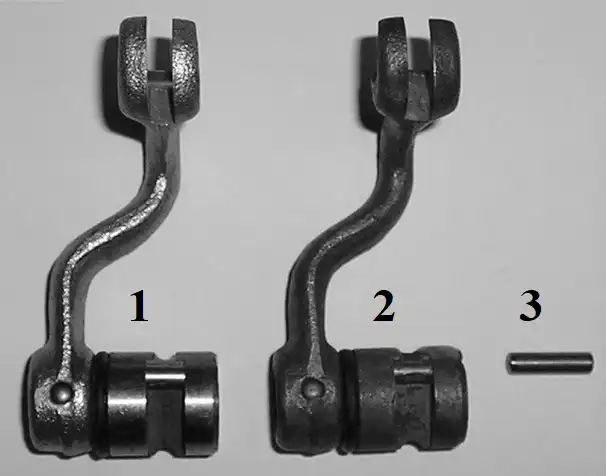
3 – new pressure pin.
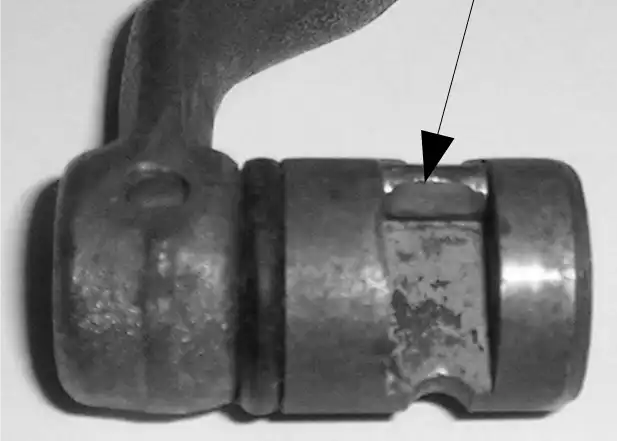
Check the push rods for any deformity or wear and replace them if any is found.
The clutch plate assembly does not have any adjustment to it. As noted in the owners manuals, the center bolt on the clutch pressure plate (see figure H) is not for adjustment. It is a bearing surface for the push rod and if the bolt head has a hole worn into it from the push rod, it should be replaced (part no. 51-32-020-000). Not mentioned in any of the manuals or parts lists is the pressure plates came in a variety of thicknesses (see figure I) which is the method of compensating for the clutch plates stack to obtain the specifications for measurement “X”. If your measurement of the arm is less than “x” you need to install a thinner pressure plate. If your measurement is more than “x” you need to install a thicker pressure plate.
The pressure plates are made of magnesium and were all cast as the thicker plate. They were machined down to make them thinner and reduce the movement to the push rods to make contact with their center bolt.
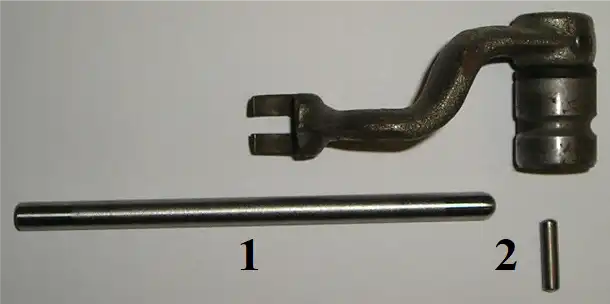
#1 - push rod
#2 – pressure pin
